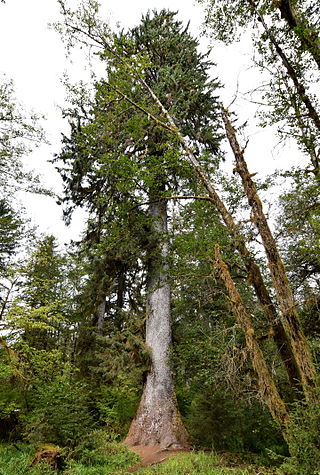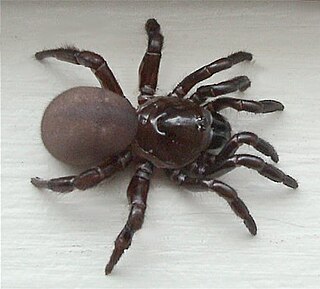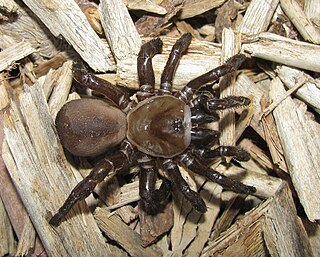
A spruce is a tree of the genus Picea, a genus of about 35 species of coniferous evergreen trees in the family Pinaceae, found in the northern temperate and boreal (taiga) regions of the Earth. Picea is the sole genus in the subfamily Piceoideae. Spruces are large trees, from about 20 to 60 m tall when mature, and have whorled branches and conical form. They can be distinguished from other members of the pine family by their needles (leaves), which are four-sided and attached singly to small persistent peg-like structures on the branches, and by their cones, which hang downwards after they are pollinated. The needles are shed when 4–10 years old, leaving the branches rough with the retained pegs. In other similar genera, the branches are fairly smooth.

Picea mariana, the black spruce, is a North American species of spruce tree in the pine family. It is widespread across Canada, found in all 10 provinces and all 3 territories. It is the official tree of the province of Newfoundland and Labrador and is that province's most numerous tree. The range of the black spruce extends into northern parts of the United States: in Alaska, the Great Lakes region, and the upper Northeast. It is a frequent part of the biome known as taiga or boreal forest.

Picea abies, the Norway spruce or European spruce, is a species of spruce native to Northern, Central and Eastern Europe.
In the scientific name of organisms, basionym or basyonym means the original name on which a new name is based; the author citation of the new name should include the authors of the basionym in parentheses. The term "basionym" is used in both botany and zoology. In zoology, alternate terms such as original combination or protonym are sometimes used instead. Bacteriology uses a similar term, basonym, spelled without an i.

Picea sitchensis, the Sitka spruce, is a large, coniferous, evergreen tree growing to almost 100 meters (330 ft) tall, with a trunk diameter at breast height that can exceed 5 m (16 ft). It is by far the largest species of spruce and the fifth-largest conifer in the world, and the third-tallest conifer species. The Sitka spruce is one of the few species documented to exceed 90 m (300 ft) in height. Its name is derived from the community of Sitka in southeast Alaska, where it is prevalent. Its range hugs the western coast of Canada and the US, continuing south into northernmost California.

Picea omorika, common name Pančić spruce or Serbian spruce, is a species of coniferous tree endemic to the Drina River valley in western Serbia, and eastern Bosnia and Herzegovina, with a total range of only about 60 ha, at 800–1,600 m (2,625–5,249 ft) altitude. It was originally discovered near the Serbian village of Zaovine, on Mount Tara, in 1875, and named by the Serbian botanist Josif Pančić; the specific epithet omorika is simply the Serbian word for the tree.

Picea engelmannii, with the common names Engelmann spruce, white spruce, mountain spruce, and silver spruce, is a species of spruce native to western North America. It is mostly a high-elevation mountain tree but also appears in watered canyons.

The blue spruce, also commonly known as green spruce, Colorado spruce, or Colorado blue spruce, is a species of spruce tree. It is native to North America, and is found in USDA growing zones 1 through 7. It is found naturally in Arizona, Colorado, Idaho, New Mexico, Utah and Wyoming. It has been widely introduced elsewhere and is used as an ornamental tree in many places far beyond its native range. The blue spruce has blue-green colored needles and is a coniferous tree.

White spruce is a common name for several species of spruce (Picea) and may refer to:

The Cameroonian shrew is a species of mammal in the family Soricidae. It is endemic to Cameroon. Its natural habitat is subtropical or tropical moist montane forests. It is threatened by habitat loss.

Spruce-pine-fir (SPF) is a classification of lumber that can be traded on commodities exchanges.
Pomponia Ummidia was an Anatolian Roman noblewoman and was a prominent figure in Rome during the reigns of the Roman Emperors Gallienus, Claudius Gothicus, Quintillus and Aurelian. She lived in the period the Crisis of the Third Century in the Roman Empire.
The gens Ummidia was a Roman family which flourished during the first and second centuries. The first member of the gens to achieve prominence was Gaius Ummidius Durmius Quadratus, governor of Syria during the reigns of Claudius and Nero. The Ummidii held several consulships in the second century, and through the marriage of Gaius Ummidius Quadratus Annianus Verus they were related to the emperor Marcus Aurelius.

Ummidia is a genus of mygalomorph spiders in the family Halonoproctidae, and was first described by Tamerlan Thorell in 1875.
Ummidia aedificatoria is a species of trap-door spider found in Portugal, Spain and Morocco. It builds a shallow silk-lined trapdoor burrow, similar to those of U. algeriana and U. picea. Only three female specimens have been positively identified, all ranging from 18 to 29 millimeters in length.
Ummidia algarve is a spider species found in Portugal. Unlike other known Ummidia species, it creates a trapdoor at the entrance of the burrow.

Halonoproctidae is a family of mygalomorph spiders, split off from the family Ctenizidae in 2018. Species in the family are widely distributed in North and Central America, Australasia, Asia, southern Europe and North Africa. One species is recorded from Venezuela in South America. They are relatively large, sombrely coloured spiders, that live in burrows with some kind of trapdoor.
Gaius Ummidius Quadratus Annianus Verus was a consul suffectus around the year 146 CE.
Ummidia richmond is a species of spider in the family Halonoproctidae. It is endemic to Florida.










